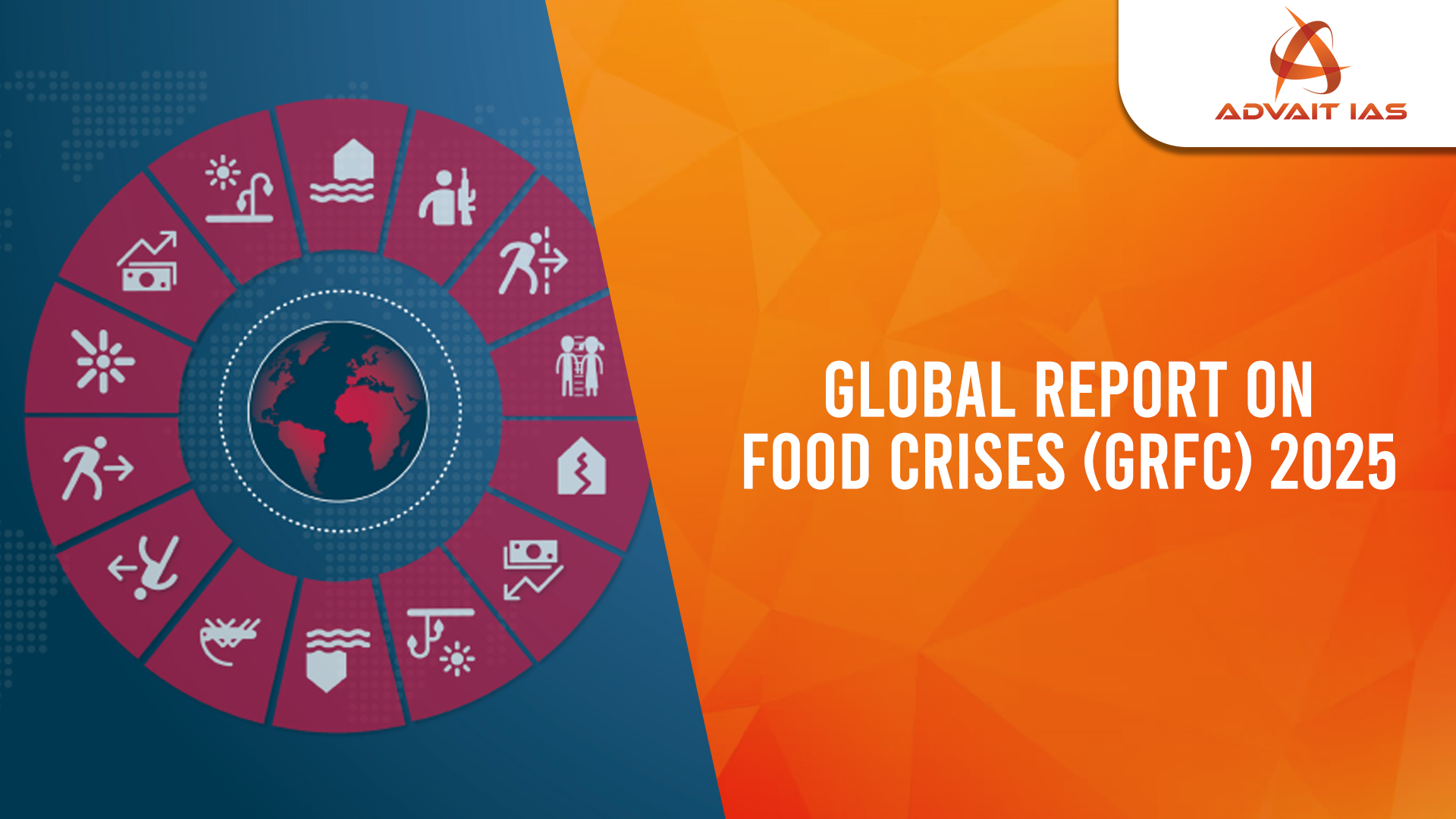- GRFC 2025 reveals 295 million people in 53 countries suffered from acute food insecurity, up by 7 million since 2023.
- Report published by Global Network Against Food Crises (GNAFC) and Food Security Information Network (FSIN).
About GRFC
- Annual report on acute food insecurity and malnutrition.
- Acute food insecurity: Threatens life/livelihood due to food availability/access issues.
- Nutrition crisis: High levels of acute malnutrition in children (6–59 months) due to disease, poor food, and conflict.
Key Drivers of Food Insecurity
- Conflict & Displacement
- Affects 8 million people in 20 countries (e.g., Sudan, Nigeria, Myanmar).
- 30.4 million global acute malnutrition cases (up from 26.9 million in 2023).
- Extreme Weather Events
- Affects 1 million people across 18 countries due to El Niño, floods, heatwaves.
- 95.8 million displaced persons in food crisis countries (75% internally displaced).
- Economic Shocks
- Affects 4 million people in 15 countries (e.g., South Sudan).
- Disrupts incomes, raises food prices, lowers access to nutrition.
- Funding Cuts
- 2025: USAID cuts threaten aid to 14 million children in countries like Afghanistan, DRC, Haiti.
- Weak Governance
- Poor healthcare, fragile economies, and lack of data worsen food crises.
Socio-Economic Impacts
- Poverty Rise: Higher food prices erode purchasing power.
- Human Capital Loss:
- 735 million people chronically undernourished.
- 45% of under-5 child deaths linked to nutrition.
- Social Instability: Hunger drives civil unrest and climate migration (23.5 million displaced).
- Gender Inequality:
- Women make up 60% of chronically hungry (UN Women).
- Less access to land, credit, and aid.
- Education Impact:
- Hunger drives school dropouts.
- 6 million rise in out-of-school children post-2021.
Suggested Solutions
- Nutrition Info Systems:
- Early warning systems (e.g., Somalia 2022–23 famine prevention).
- Integrated Food Security:
- Emergency agricultural aid (currently just 3% of humanitarian food funding).
- Use combined data to target responses.
- Climate Resilience:
- Climate-smart farming, peace-linked food systems, rural market rebuilding.
- Agrifood System Transformation:
- Invest in agriculture, food fortification, therapeutic nutrition programs, dietary diversity.
GRFC 2025 warns of a deepening global food crisis. Urgent reforms needed in climate-resilient agriculture, nutrition infrastructure, and humanitarian response. Emphasis on Nutritional Equity, Gender Inclusion, and Resilient Food Systems.






